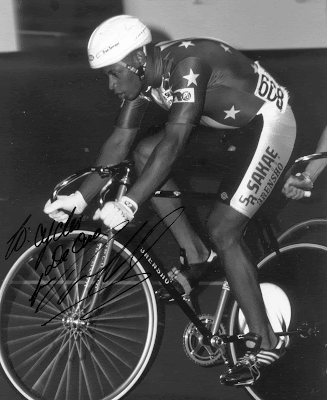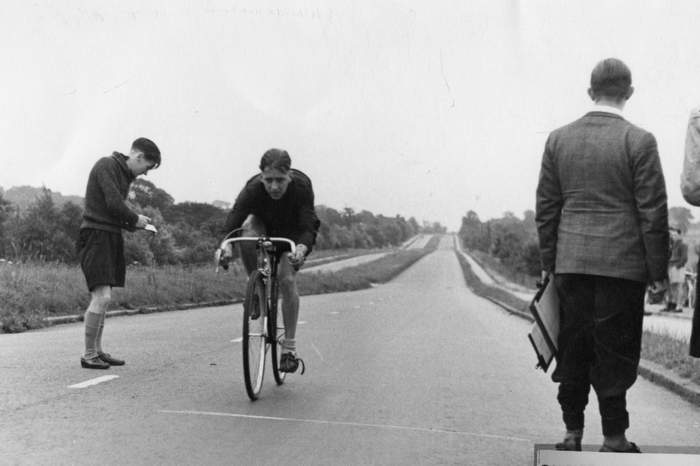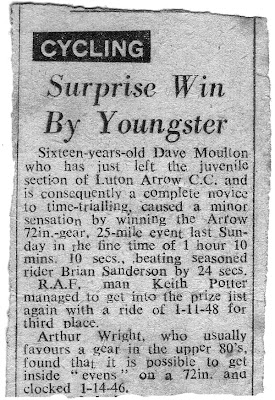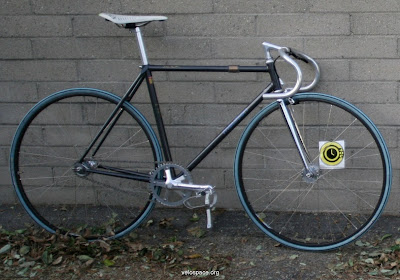Fixing fixed wheel terminology
 Mon, March 10, 2008
Mon, March 10, 2008 Buffalo Bill writing on Moving Target about an article in the British Guardian/Observer newspaper on the Fixie craze.
Bill was ticked at the journalist writing the piece because she referred to the bikes as “fixed gear” when the correct term for the UK should be “fixed wheel.”
I agree, this is a British journalist writing in a British newspaper for a British audience; she should have used British terminology. Anyway, fixed wheel should be the correct term anywhere; it is a “fixed” wheel as opposed to a “free” wheel.
These bikes are described as having “no gears,” then are called “fixed gear.” As I see it, fixed wheel is the more logical term.
I have been guilty in the past of using the “fixed gear” term. In my defense, I can only plead that living in America for the last 29 years, using American terminology comes as second nature to me. Often if I don’t use American English no one knows WTF I am talking about.
If Bill is offended by the term “fixed gear,” let me say it drives me nuts that the fixie crowd refer to toe clips as “cages.” The reason we have all this strange terminology is that people don’t know the correct term, so they make something up.
These are cages.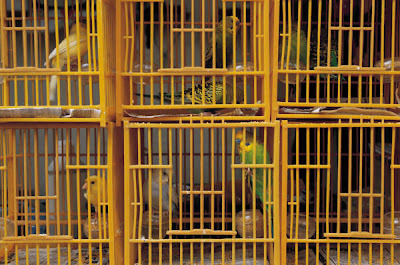
These are toe clips.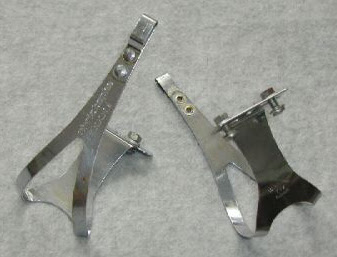 That’s why we have clipless pedals. Pedals without toe clips; like sugarless gum is gum without the sugar. Don’t ask me why you “clip in” to clipless pedals because you’ll get me even more confused.
That’s why we have clipless pedals. Pedals without toe clips; like sugarless gum is gum without the sugar. Don’t ask me why you “clip in” to clipless pedals because you’ll get me even more confused.
I’m already confused because some refer to the part of the pedal where the toe clip bolts on to as the “cage.” However, whenever I have seen “cages” come up on the various forums, they are defiantly talking about the shiny bits that go around your toes.
I see subjects like: "My cages hit my front wheel." Answer: Don’t carry yer budgie on the handlebars. (US translation: A budgie is a parakeet.)
The writer of the Guardian article seemed to think the fixie craze was started by West Indian immigrants in New York City in the 1980s. That is a new one to me; I hadn’t heard that one before. If this trend did start in NYC in the 1980s, why did it take over 25 years to go mainstream?
To set the record straight, the fixed wheel craze started the moment the first bicycle was built. The first bicycles had a fixed wheel, often with no brakes or minimum braking; the freewheel and efficient braking were invented later.
Fixed wheel bikes have always been ridden and enjoyed by bike enthusiasts. Ideal for commuting and riding in heavy traffic, or riding in close quarters with other riders. The rider has more control over the bike and can speed up or slow down at will.
Now the trend or current craze is “Riding a fixed wheel bike for no reason other than it is trendy to do so.” Just because everyone else is doing it.
Going brakeless is also a trend, and not necessarily a good one. Having a front brake will not impair your cycling pleasure, or performance one iota; you don’t have to use it. However, in an emergency, you may just be glad it is there.
I think the whole brakeless thing started because bike messengers were riding track bikes that were built with no provision for brakes. Bike messengers probably felt they were experienced enough not to need a brake. They could be right; they are professionals riding a bike all day, every day for a living.
Trendy or not, riding a bike with no alternative means of stopping is not right for everyone. It doesn’t mean that anyone can jump on a brakeless fixed wheel bike with little or no experience, and ride safely in today’s traffic.
You can always spot the inexperienced rider on the track; (Although often these are experienced road riders.) in an emergency, the first they do is stop pedaling and reach for the brakes that aren’t there.
While they are getting over the surprise that the pedals keep on turning, they plow into the rider who has fallen in front of them. Whereas the experienced track rider will instinctively steer around the obstruction.
Anyway, to sum it all up as I see it; it doesn’t matter that people are getting into this trend for all the wrong reasons. For a few, cycling will get into their blood and they will continue in some form or other long after this trend has passed.
Just as many who took up mountain biking in that craze during the late 1980s, early 1990s, and later switched to road bikes. Many are the hardcore, bike enthusiasts of today.
If nothing else, they will experience first hand what it is like to ride a bicycle in traffic. Maybe as adults they will become better car drivers because of it; at least drivers who are tolerant towards other people riding bicycles.
 Dave Moulton | Comments Off |
Dave Moulton | Comments Off |  Fixed Wheel,
Fixed Wheel,  Satire
Satire 
















